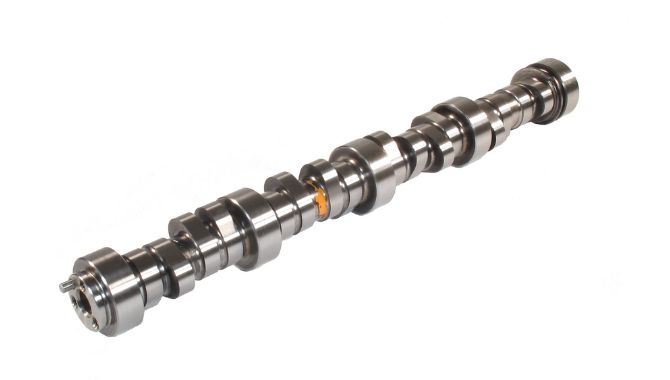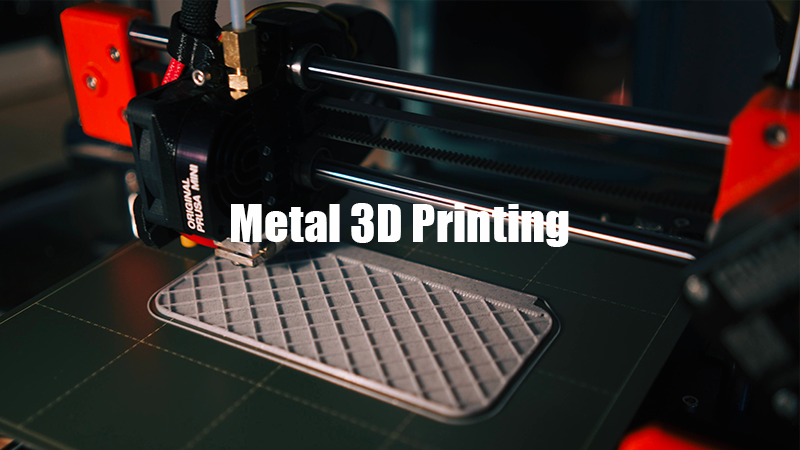
In this guide, you will find all information about camshaft – from types, replacement time, working principle, manufacturing material, to causes of failure, among other critical aspects.
Let’s dive right in.
What is Camshaft in Engines?
Camshaft is a special system in automotive engines with the ability to regulate fuel, air and exhaust gases.
Main Functions of Camshaft

The shaft perform integral functions in the engine such as:
- Regulate airflow into the engine
- Regulate fuel flow into the engine
- Help exhausts out the already burnt gases from the combustion chamber of an engine.
Types of Camshaft in Engine Drives?
For an appropriate engine to function, the entry of air and fuel into the combustion chamber has to be regulated. Also, after a full combustion, the burnt gases need be let out. This process is completely done by a camshaft.
Therefore, there are two main types of camshafts in different engine drives namely;
- Flap Tappet camshaft
- Roller camshaft
Flap Tappet Camshaft
In this camshaft, the lifters are flat shaped and also they have their face is having a slight crown. The construction of their walls is in a tapered shape. For a proper process of functionality, there should be a spinning suitability between the lobes and the lifters.
Therefore, the spinning between the two components achieves a proper functionality. These camshafts are more often built from steel thus making them durable and more light compared to the other camshaft types.

Some advantages include the following;
These types of camshafts are more affordable compare to roller camshafts.
There is a uniform wear on the lobe since the lifter cycles slightly on the sides of the lobe.
Roller Camshaft
The camshaft consists of;
- An axle
- Wheel
- Needle bearings
The wheels are held in position by the bearing needle. The roller lifters are allied together hence inhibiting their rotation.
Advantages of this camshaft include;
These cams produce more power to the engine because of a decreased rate of friction.
They last longer since they wear slowly.
Since they are having steeper lobes, there is an increased flow of air into the combustion chamber hence increased power output.

How Camshaft vs Crankshaft Compare
A camshaft in a drive engine regulates air and fuel into the combustion chamber and at the same time exhausts burnt gases from the chamber.
On the other hand a crankshaft is a component in a piston engine that does the conversion of high pressures and temperatures into rotary motion.
Within the engine, there exist connecting rods. It links the engine pistons to crankshaft. From here, the wheels are made to rotate because the flywheel is being rotated by the rotary motion from the piston through the rod.

| Variable | Camshaft | Crankshaft |
| Operating mechanism | Regulates fuel and air to engine. Also, after the gases are fully burnt by the engine, they are exhausted by the camshaft | This component in the piston engine converts high pressures and temperatures into a rotary motion which makes the flywheel to rotate and thus wheels to keep moving. |
| Cycle speed | On the basis of a four stroke engine, the camshaft does a single revolution per power stroke | In a four stroke engine, the crankshaft completes two revolutions in a single power stroke. |
| Engine position | This component is mounted above the engine cylinder | The crankshaft is mounted beneath the engine cylinder |
| Engine type | Suitable for both 2 and 4 stroke engines. | The crankshaft is used in a four stroke type of engine |
| Component structure | The component uses gears and integrated cams in its functionalities | The component consists of bearings, oil hole, a crank pin and a crank web. |
| Material of manufacture | Camshafts can only be fabricated from cast iron and steel | Crankshafts are constructed from alloys of steel only |
| Number of components in the engine | Both one or two camshafts can be used | An engine only uses a single crankshaft |
| Component size | A camshaft is light | A crankshaft is heavier |
| Amount of force required in its operation | Less force is required in triggering of the valves during the working process | More force is required for the crankshaft to be into operation |
| Component location | Depending on the engine design, you can find it either at the crankcase or cylinder head | It is located in the crankcase |
Camshaft Working Principle in Automotive Engines
The chain mechanism helps the gears or sprockets in the working operation of the camshaft.
Usually, this shaft helps in:
- Gears movement
- Sprockets movement
Usually, the alignment ratio is 1 to 2. Of course, this should be between crankshaft gears and camshaft system.
Consequently, with a single stroke, crankshaft will complete two cycles while camshaft can only complete one cycle.
Throughout the whole process, fixed time sustainability has to be maintained between these two components in respect to the piston positions. This has to be done to ensure the gears and sprockets are closing and open the camshaft valves at appropriate time.
Best Material for Camshaft Fabrication
The best material for camshaft fabrication is alloy of steel because they are light and strong.
Also, there are those made from cast iron. It is because the cast iron has high resistance to wear.
Furthermore, in the recent past, automotive engine manufacturer have been trying other materials such as aluminum alloys.
Best Time for Camshaft Replacement
The camshaft replacement should be done when;
In the event a car’s engine light keeps going on or is constantly on, then, there might be a problem with the camshaft. Therefore it should get checked and replaced.
The camshaft should be checked when the car engine is not starting as usual. The car’s cam shaft should be replaced to determine whether the car will start or it is another mechanical problem affecting it.
A change on how the car moves on the road is also critical because it determines the camshaft operation status. For instance, if the car slowly accelerates and a rough idling, there is a problem with the camshaft. On this observation, they ought to get a replacement.
Factors Determining Camshaft Price
The camshaft price is affected by the following factors;
Production Cost
During their manufacture, these components undergo a lot of process that must be incurred when selling them. Some of the likely costs include cost of raw materials, logistical cost and the processing cost by the manufacturer. The more the costs are, the more the final price of the camshaft will be and vice versa.
Type of Raw Material used
The type of material used in manufacturing of these components has a direct impact on the final component pricing. For instance, while using iron, the costs are going to be relatively low. This is because iron is cheap and requires less energy and labour during its fabrication.
On the other hand when alloys of steel are being used in the manufacture of camshafts, the costs will be high. Steel is expensive to purchase and its entire manufacturing process consumes a lot of time, labor and energy.
Therefore, when iron has been used, the camshaft will be less expensive compared when alloys of steel have been used.
Life Expectancy of the Camshaft
For a longer life expectancy, the shaft will be more expensive than the one expected to have a low life expectancy.
Technological Advancements
In the recent past, there have been modifications on the camshaft in terms of their technology such as camshaft sensor. The sensor communicates the camshaft’s speed to the engine control module. With type of technologically advanced component, it is obvious that the pricing will be high compared to the non-technological advanced.
Reaction with Environmental Factors
These camshafts are fabricated in a way that they are unlikely affected by external environmental factors of humidity and high temperatures. For this reason, there prices are raised.
Competition from other Manufacturers
Different component manufacturers have a different pricing on their camshaft components. This difference is being brought by the sources of raw materials, logistics and other production costs like labor. For a better market survival, you have to keep up with their prices thus being even.
Therefore, competitors determine the camshaft’s prices in the market.
Variables Determining Camshaft Performance
The following are variables that determine the component’s performance;
The size and placement of the lobes determines all the engine characteristics of compression and idling. The camshaft will be failing if the engine revs hard on its idling mode. Also, the engine will be failing if the compression is poor.
Revolutions per minute determine the ability of the engine to create more power and accelerate quickly within a short time.
The more the rpm on the engine, the more the camshaft is making more cycles thus the more the functioning. If the engine takes time to pick on the rpm and accelerate quickly because of cylinder misfire, then the camshaft might be failing.
Lift duration of the camshaft determines how long the valves will stay open for more air and fuel to enter the combustion chamber. Longer lift durations will lead to more combustion in the engine thus creating more power to the engine. Therefore, the longer the camshafts lift duration, the more the performance of the engine.
Causes of Camshaft Failure
These factors include;
Lack of Enough Lubrication
Lubrication using the right lubricant should be adhered to prevent failure of the camshaft. Inadequate lubrication will lead to a metal on metal contact hence failure. Also, contaminated lubricants used on the camshafts lead to breakage.
Poor Set-up Procedures
During the installation process, the right procedure outline on the manual lead should be adhered to prevent breakages of the camshaft.
Reusing Worn out Components
During the installation of new flat tappet cams, components like tappets should be also be installed instead of using the old ones. Reusing worn out components result in the failure of the camshaft.
Use of Inferior Hardware
Using hardware that is not recommended by the manufacture will lead into a camshaft failure. Therefore, only specified hardware should be used from the manufacturer.
Wearing Off Of Cam Lobes
Since they are in constant movement, cam lobes get in touch with factors like dirt and debris hence taking off their lubrication. After some time without a faster replacement, they will wear out real quick and cause failure to the camshaft.
How to Maintain Camshaft in Automotive Engine
The following ways are used to maintain a camshaft;
All the components of a camshaft should be properly lubricated using lubricants specified by the manufacturers. The lubricant should be applied on the surfaces of lobes, all flat tappet cams, drive gears and lifter face bottoms.
In case you want to reuse flat tappet cam which are still in good condition, then they must be kept in their initial order. If a mix-up takes place, then they will have to be discarded and new ones put in place.
After a successful set up of the camshaft, it should be keenly getting tested to prevent mechanical interferences that might lead camshaft failure. Common interferences may be due to:
- Valve to piston interference
- Spring coil interference
Only hardware that has been recommended by the manufacturer should be used on the camshaft thus compatibility is enhanced. This will maintain the camshaft in an automotive engine.
The operator needs to follow the due procedure during the installation of the camshaft and its components. At times, mistakes are made where the due procedure in neglected thus resulting into camshaft failure. The outlined manufacturers procedure should at all times used to protect the camshaft.
Parts of Camshaft for Engines
Some key components include:

Cam Bearing Journals
They help in part rotation in the camshaft. Usually, the rotation is a liner motion.
The linear motion which has been converted from rotary motion enables the parts rotate.
Bearing Shells
This component is located on top of the bearing journal. It makes rotation smooth thereby reducing possible wear and tear.
Lobes
These are essential components of the camshaft as they control the rate of combustion and exhaustion of materials.
Thrust Plate
It supports the plate.
Chain Sprocket
Sprocket retains the engine’s timing belt. Its position is at the engine end at the point where the camshaft has been fixed.
Woodruff Key
This component makes sure other engine components are moving simultaneously.
New Technological Advancements in Camshaft Design and Fabrication?
Some of the advancements include;
New camshaft sensor design ensures safety and efficiency. It transmits the speed of camshaft to engine control module. At the same time, this sensor increases the engine horsepower.
Also, designing of a different camshaft for the diesel and petrol engines is a technological advancement. In diesel engines, the lobes are placed more differently to create more conservative valve timing.
Do 4 cylinder engines have camshafts?
Some engines use double overhead camshafts, so they would have as many as four across two banks of cylinders.
What is a camshaft in a motorcycle?
- Operates the inlet and exhaust valves
- Allow the fuel to get in, ignite
- And be blown out through the exhaust valves in a four-stroke engine
Conclusion
As you can see, camshaft play an integral role in automotive engines. We believe the information in this guide has given you an in-depth understanding about this useful transmission shaft.
For all your camshaft fabrication needs, contact KDM now.
More Resources:
Camshaft – Source: Wikipedia
How Cam Shaft Work – Source: HowStuffWork
What is Camshaft & How does it Work – Source: Foundry Group
Camshaft vs Crankshaft – Source: The Handy Man




